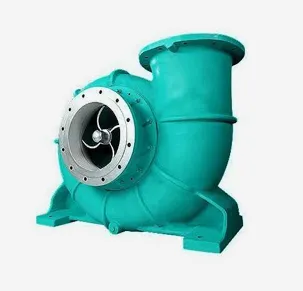Sesotho
- Afrikaans
- Albanian
- Amharic
- Arabic
- Armenian
- Azerbaijani
- Basque
- Belarusian
- Bengali
- Bosnian
- Bulgarian
- Catalan
- Cebuano
- Corsican
- Croatian
- Czech
- Danish
- Dutch
- English
- Esperanto
- Estonian
- Finnish
- French
- Frisian
- Galician
- Georgian
- German
- Greek
- Gujarati
- Haitian Creole
- hausa
- hawaiian
- Hebrew
- Hindi
- Miao
- Hungarian
- Icelandic
- igbo
- Indonesian
- irish
- Italian
- Japanese
- Javanese
- Kannada
- kazakh
- Khmer
- Rwandese
- Korean
- Kurdish
- Kyrgyz
- Lao
- Latin
- Latvian
- Lithuanian
- Luxembourgish
- Macedonian
- Malgashi
- Malay
- Malayalam
- Maltese
- Maori
- Marathi
- Mongolian
- Myanmar
- Nepali
- Norwegian
- Norwegian
- Occitan
- Pashto
- Persian
- Polish
- Portuguese
- Punjabi
- Romanian
- Russian
- Samoan
- Scottish Gaelic
- Serbian
- Sesotho
- Shona
- Sindhi
- Sinhala
- Slovak
- Slovenian
- Somali
- Spanish
- Sundanese
- Swahili
- Swedish
- Tagalog
- Tajik
- Tamil
- Tatar
- Telugu
- Thai
- Turkish
- Turkmen
- Ukrainian
- Urdu
- Uighur
- Uzbek
- Vietnamese
- Welsh
- Bantu
- Yiddish
- Yoruba
- Zulu
Telephone: +86 13120555503
Email: frank@cypump.com
Jul . 30, 2024 12:49 Back to list
Understanding the Importance of Pumping Your Septic Tank for Optimal Performance and Longevity
Understanding Pumping for Septic Tanks
Septic tanks play a crucial role in managing wastewater for homes and businesses that are not connected to a centralized sewage system. These systems are designed to treat and dispose of household sewage in a safe and sustainable manner. However, one essential aspect of maintaining the effectiveness of a septic tank is regular pumping. This article will explore the importance of septic tank pumping, the process involved, and tips for proper maintenance.
Importance of Regular Pumping
Over time, solid waste and sludge accumulate at the bottom of the septic tank. This buildup can inhibit the tank's ability to function effectively, potentially leading to system failure. Regular pumping is required to remove excess solids and sludge before they overflow into the drain field or clog the pipes. Generally, it is advised to pump a septic tank every 3 to 5 years, but the frequency can vary based on several factors, including household size, tank size, and water usage.
Failing to pump the septic tank regularly can result in serious problems. A full tank can cause sewage backups into the home, creating unsanitary conditions and health hazards. Additionally, excessive sludge can limit the tank's ability to break down waste, leading to expensive repairs or even a complete replacement of the system.
The Pumping Process
The septic tank pumping process typically involves several key steps
1. Inspection Before pumping, a professional technician will inspect the tank to assess its condition. This includes checking the inlet and outlet baffles, as well as examining for any signs of system failure, such as leaks or odors.
2. Pumping Using a high-powered vacuum truck, the technician will remove the sludge and scum layer from the tank. This process usually takes about 30 minutes to an hour, depending on the tank's size and the amount of waste present.
3. Cleaning After pumping, some technicians may recommend cleaning the tank's interior surfaces to ensure that there is no residual buildup that could affect future performance.
pump septic tank

4. Inspection Post-Pumping Finally, the technician will perform a final inspection to ensure that the tank is functioning correctly and that no repairs are needed.
Tips for Proper Maintenance
To ensure the longevity and efficiency of your septic system, consider the following maintenance tips
- Know Your System Familiarize yourself with the layout of your septic system and its components. Understanding how your system works can help you identify potential problems early on.
- Conserve Water Excessive water usage can overwhelm the septic tank. Employ water-saving fixtures and practices to reduce the amount of wastewater generated.
- Avoid Flushing Non-Biodegradable Items Items such as wipes, feminine hygiene products, and certain chemicals can hinder the breakdown of waste and lead to clogs.
- Monitor Drainage Keep an eye on your drain field. If you notice pooling water or lush patches of grass, it could indicate that the system is struggling.
- Regular Pumping Schedule routine inspections and pumping every few years to avoid future complications.
Conclusion
Pumping a septic tank is a necessary maintenance task that plays a pivotal role in ensuring the system operates efficiently. By adhering to a regular pumping schedule and implementing good practices, homeowners can protect their investment and prevent costly damages. Understanding the importance of and processes involved in septic tank pumping is essential for any property owner relying on this method of wastewater management.
-
pipeline pump - Chi Yuan Pumps Co., LTD.|High Efficiency&Low Noise
NewsJul.31,2025
-
ISG Series Vertical Pipeline Pump - Chi Yuan Pumps Co., LTD.|High Efficiency, Energy Saving, Low Noise
NewsJul.30,2025
-
ISG Series Vertical Pipeline Pump- Chi Yuan Pumps|High Efficiency&Low Noise
NewsJul.30,2025
-
ISG Series Vertical Pipeline Pump-Chi Yuan Pumps Co., LTD.|High Efficiency&Energy Conservation
NewsJul.30,2025
-
ISG Series Vertical Pipeline Pump - Chi Yuan Pumps Co., LTD.|Advanced Hydraulic Design&Energy-Efficient Solutions
NewsJul.30,2025
-
ISG Series Vertical Pipeline Pump - Chi Yuan Pumps Co., LTD.
NewsJul.30,2025










